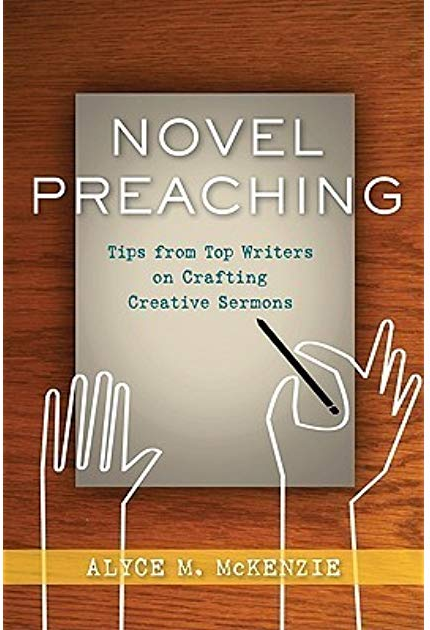Novel Preaching: Tips from Top Writers on Crafting Creative Sermons
by O. Wesley Allen, Jr. on Thursday, June 16, 2016

Novel Preaching: Tips from Top Writers on Crafting Creative Sermons. By Alyce M. McKenzie. Louisville: Westminster John Knox, 2010. 180 pp.
Reviewed by O. Wesley Allen, Jr.
One of the first books the PCPE Peer Groups reads is Alyce McKenzie’s Novel Preaching and for good reason. In this book she offers a prescription for congregations bored with preaching but who yet crave deeper knowledge about the Christian faith: “sermons that teach with imagination” (5). The prescription is divided into two parts.
In the first part, entitled “Cultivating the Imagination,” McKenzie invites readers/preachers to an imaginary writer’s conference where, in the course of three chapters, she shows what preachers can learn from the discipline of creative writing—how and what to notice in the details of life that can fill our sermons with imagery that invites hearers into the gospel. This is about much more than finding the right illustration for a particular sermon. It is about transforming the preaching event by training one’s attentiveness in the course of daily life to see both the human condition and God’s providential and salvific care in the midst of that condition in new ways. Specifically, McKenzie shows how preachers can learn from fiction writers ways to attend to and incorporate in sermons dilemma, incongruity, connections between the unrelated, memory, common emotion, archetypal characters, flexible images or concepts, imaginative situations, and intriguing fictional situations (22). Moreover, she conveys practical advice from these writers concerning fostering imaginative attention and developing habits for collecting those things to which we attend for use in future sermons—e.g., keeping a journal, free writing, reading, walking, and festive play (39-44).
In the second section of the book, entitled “Sermon Shapes,” McKenzie turns her focus to creative structures and movement that preachers can use for shaping the sermonic material in a way that it teaches with imagination. The first chapter of the section (Chapter 4) again brings tools from fiction writing to bear on the sermon development. Here McKenzie advises how to create sermon structures that, analogous to fiction, have depth and coherence, are engaging, offer true teaching, and moves from making an entrance to making an exit. In Chapter 5, McKenzie turns from fiction writers to contemporary homiletical approaches that offer potential for living up to these standards. Imagining all homileticians as contestants at different cooking stations on Iron Chef, McKenzie walks readers through the room sampling various chefs’ recipes for sermons—Charles Rice, Fred Craddock, Patricia Wilson-Kastner, Eunjoo Mary Kim, David Buttrick, Richard Eslinger, Henry Mitchell, Frank Thomas, Paul Scott WilsonNora Tubbs Tisdale, Eugene Lowry, Linda Clader, Post Vatican II Sacramental preachers, Mike Graves, Thomas Long, Joseph Webb, and Emerging Church preachers.
The second section of the book concludes with eight of McKenzie’s sermons. Throughout the book, she has pointed ahead to these sermons, naming which pieces of advice are exemplified in which particular sermon. Thus, by the time readers get to the end of the book, they are primed to see what the creative processes look like in the final product of a sermon.
For any preacher wanting to develop and deliver more creative, engaging and effective sermons, Novel Preaching is a must read. It will transform you from someone looking for a good, canned illustration, to someone who develops a knack for noticing the world in new ways that inform explorations of the Christian faith.
